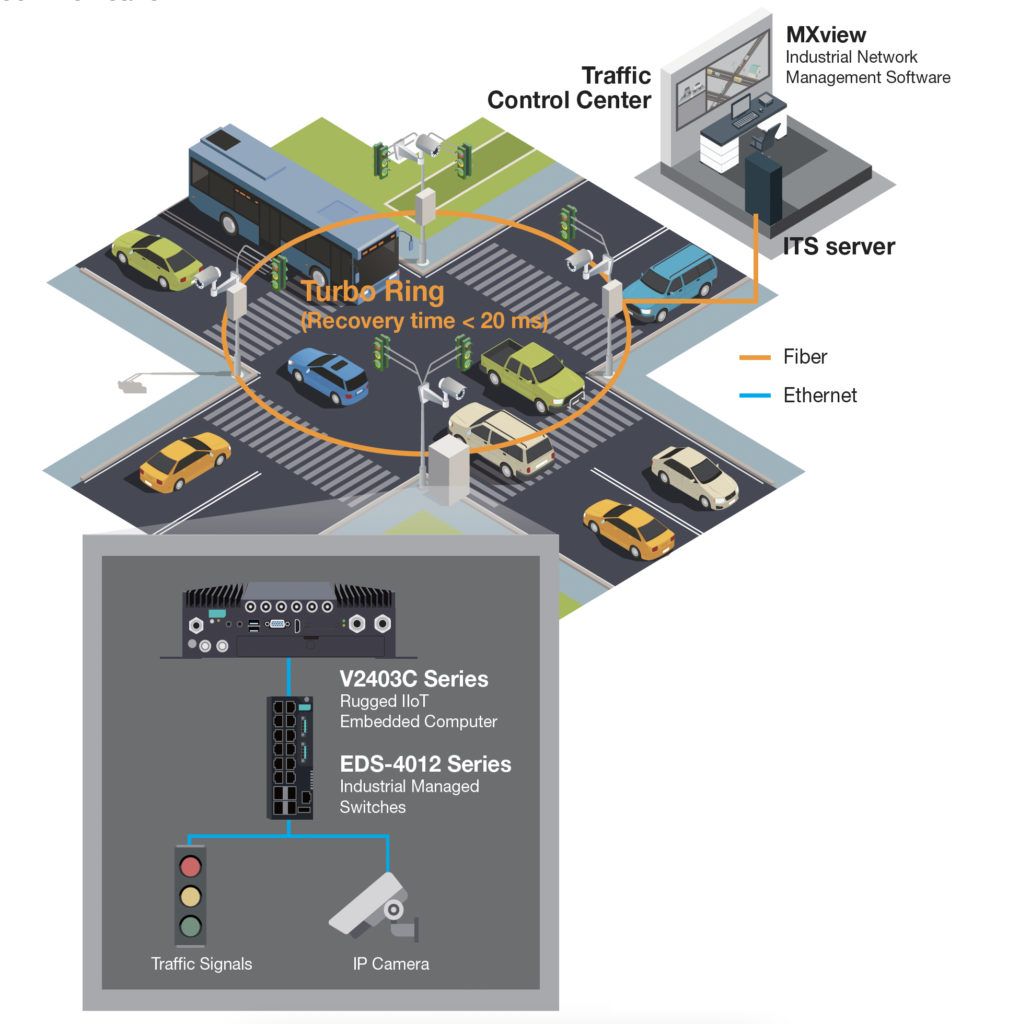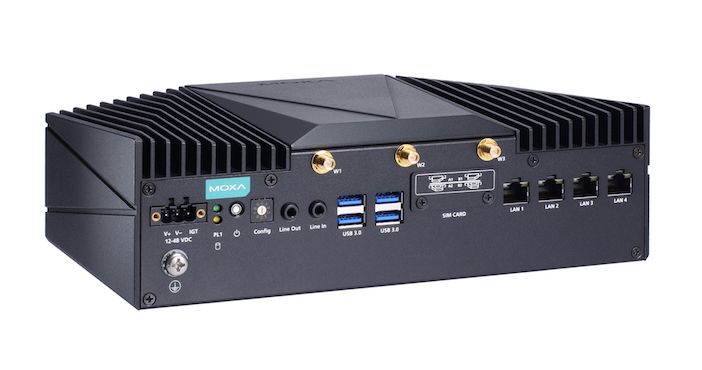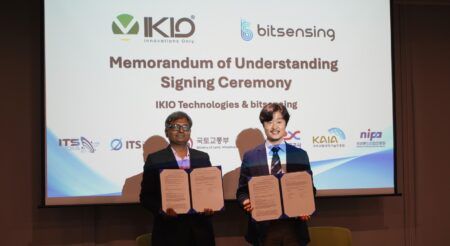Moxa’s new ITS solution, the Moxa V2403C, can be used in roadside units for collecting data from sensors and cameras, as well as acting as a bridge via a Moxa managed switch to ITS servers in traffic control centers.
Moxa’s networking solutions process and store real-time ITS information, helping to reduce latency, increase availability, and lower data communication and storage costs.
Moxa V2403C computers comply with EN 50121-4, E1 mark, and ISO- 7637-2 standards, qualifying them for rail-wayside and in-vehicle (except trains) applications.
Exceptionally rugged, these industrial-grade computers withstand challenging environmental conditions in operating temperatures as diverse as -40 to 70˚ C (-40° to 158° F). They have also earned the MIL-STD-810G specification that put the V2403C through 29 separate tests against shock, vibration, heat, cold, humidity, and more.

Built around an Intel Core i7/i5/i3 or Celeron processor, Moxa V2403C embedded computers deliver improved performance by featuring up to 32 GB RAM, one mSATA slot, and two HDD/SSD for storage expansion.
A rich set of interfaces, including 4 gigabit Ethernet ports, 4 RS-232/422/485 serial ports, 4 DIs, 4 DOs, and 4 USB 3.0 ports, provide versatility and cost savings for system integrators. Also, connecting monitors is plug-and-play easy thanks to the computer’s DisplayPort and HDMI outputs with 4K resolution.
Because reliable connections and good power management are crucial to in-vehicle and roadside applications, Moxa V2403C computers feature 2 mPCIe wireless expansion slots and 4 SIM-card slots to establish redundant LTE/Wi-Fi connectivity.
Regarding power management, startup and shutdown delay mechanisms help avoid system malfunction and damage. An externally accessible rotary switch on the front panel can be adjusted to configure power ignition on/off delays for in-vehicle applications. This feature is vital to protect the computer against high/low pulses and waveforms, plus ensure the longevity of batteries and complete data preservation prior to an unplanned shutdown.





